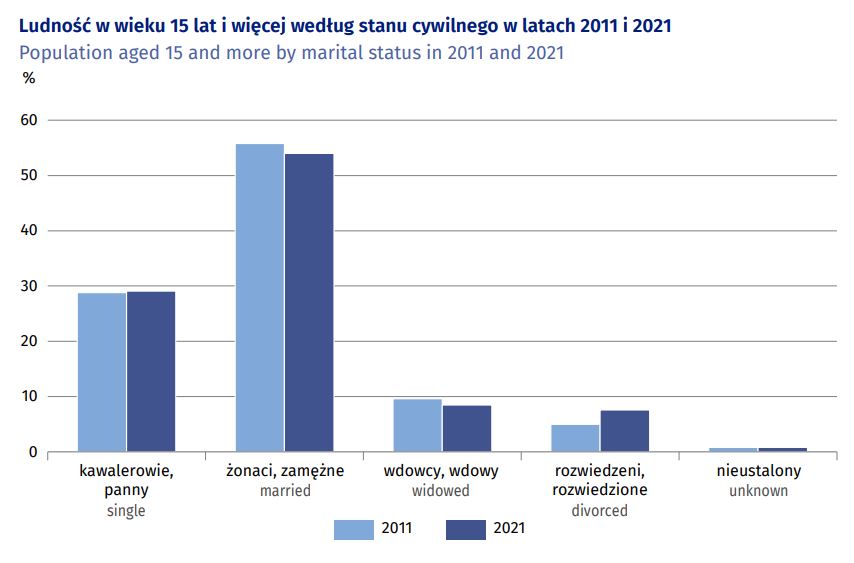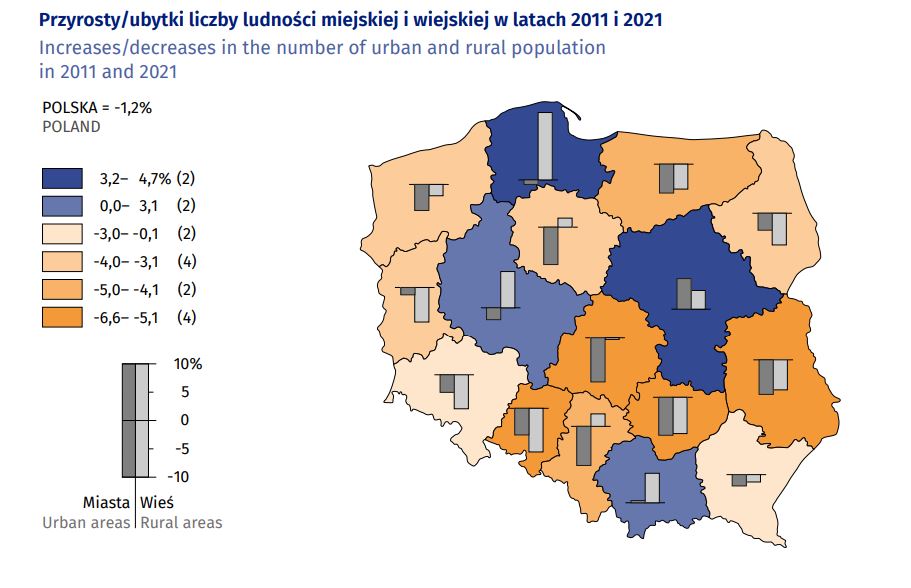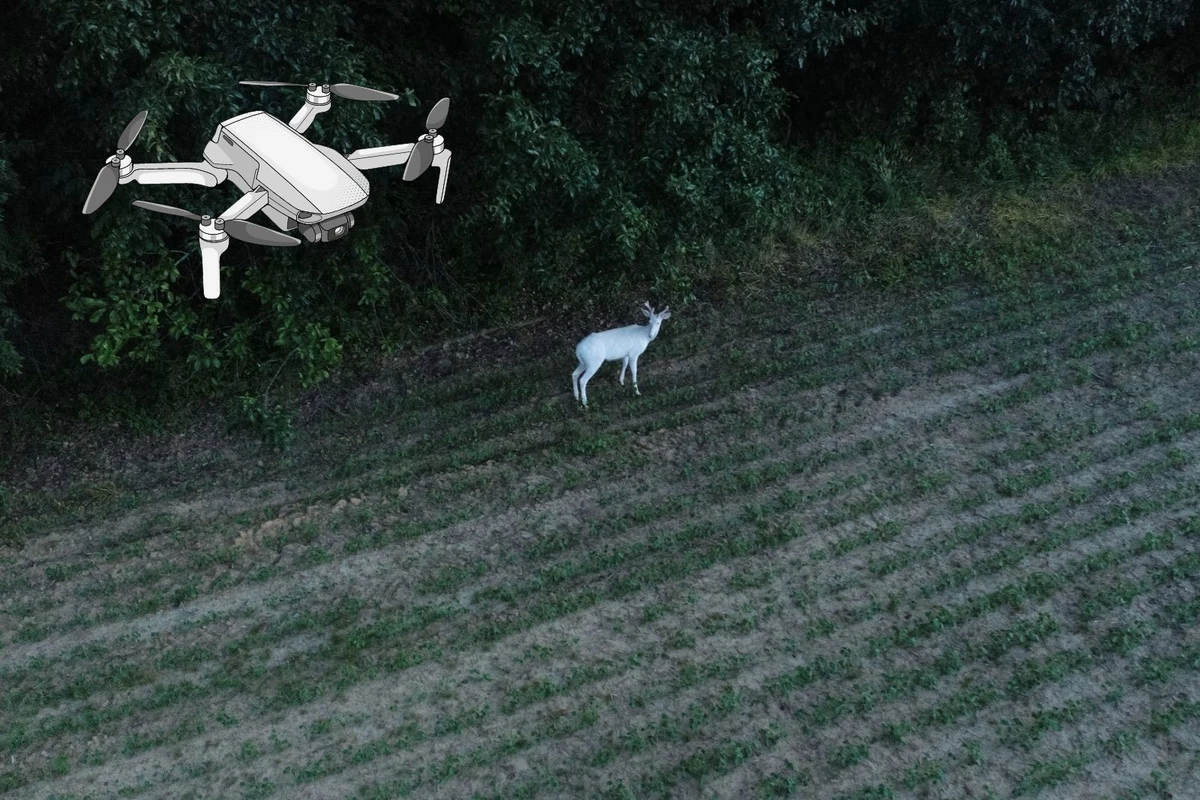The recent release of data from last year’s census has provided further insight into the aging of Polish society, revealing a population shift away from big cities to rural areas and an increase in the proportion of divorced people.
The new figures, released by Statistics Poland (GUS), a government agency, add more detail to the preliminary data released in January. Full census results will be released later this year.
Census data shows that Poland’s society is shrinking and aging
In its new report, GUS notes that the percentage of society over the retirement age of 60 for women and 65 for men has increased from 16.9% at the time of the last census in 2011 to 22.3% in 2021 Working age fell by two million or three percentage points as a percentage of the population.
“The declining proportion of children and young people and the aging of the working-age population as well as the increasing proportion of the population of retirement age represent a constant trend that has been observed for several years,” states GUS.
“The main reason is the low birth rate, which does not guarantee a simple change of generations [and] deepens the aging of Polish society.”
Poland has long suffered from one of the lowest fertility rates in Europe, something the current Law and Justice (PiS) government is trying to address through a range of “family-friendly” measures, including generous new child benefit payments.
However, as the government itself acknowledged, these measures have so far failed to boost the birth rate, leading it to unveil another package of measures last year.
After coming to power, the PiS also reversed a decision by the previous Civic Platform (PO) government to raise the retirement age to 67. More recently, however, she has tried to encourage Poles to work longer hours, including a tax change this year that lowers the income tax to zero for seniors deferring their retirement.
Polish government announces new child benefits for families to ‘shape our nation’s future’
In its new report, GUS points to the increased dependency ratio, ie the number of people of non-working age compared to those of working age. In 2021, there were 69 people of non-working age for every 100 people of working age, almost 14 more than in 2011.
However, the Statistical Office emphasized that although the number of seniors in Polish society has increased sharply, more of them (more than twice as many as in 2011) remain professionally active despite reaching retirement age.
“[It] is, on the one hand, a consequence of the aging of the population and thus of the labor force, but also of legal changes, which also allow an increase in professional activity through the combination of gainful employment and pension provision,” says GUS.
Poland’s new census shows that we are already facing a demographic crisis
The new figures also show that the majority of those over the age of 15 are married. But the proportion has fallen slightly over the past 10 years, from 56% to 54%.
Meanwhile, the proportion of divorced has increased from 5% in 2011 to 7.6% in 2021, while single people make up around 29% of Polish society, roughly unchanged since the last census.

The structure of the rural and urban population has also shifted, with the new data suggesting that some Poles are leaving the cities while the rural population is increasing.
“In the cities, the population decreased by 657,000 people, while the number of rural residents increased by 181,300,” notes GUS. “[This] was largely due to the development of suburban centers (usually clustered around large cities) that were fed by young people, ex-city dwellers.”
The largest increase in rural population was recorded in the Pomeranian Voivodeship, with dynamically developing suburbs around the Tri-City region (Gdańsk, Sopot, Gdynia) on the Baltic coast.

Poland’s census was conducted between April and September last year, meaning it does not take into account the arrival of large numbers of refugees from Ukraine since the Russian invasion in February this year.
It is estimated that there are between 1.5 and 2 million Ukrainian refugees in Poland, almost half of whom are children and the rest are mostly women of working age.
How many Ukrainian refugees are there really in Poland and who are they?
Main image source: Matthias Zomer on Pexels. Infographics: CIS

Alicja Ptak is a senior editor at Notes from Poland and a multimedia journalist. She previously worked for Reuters.




